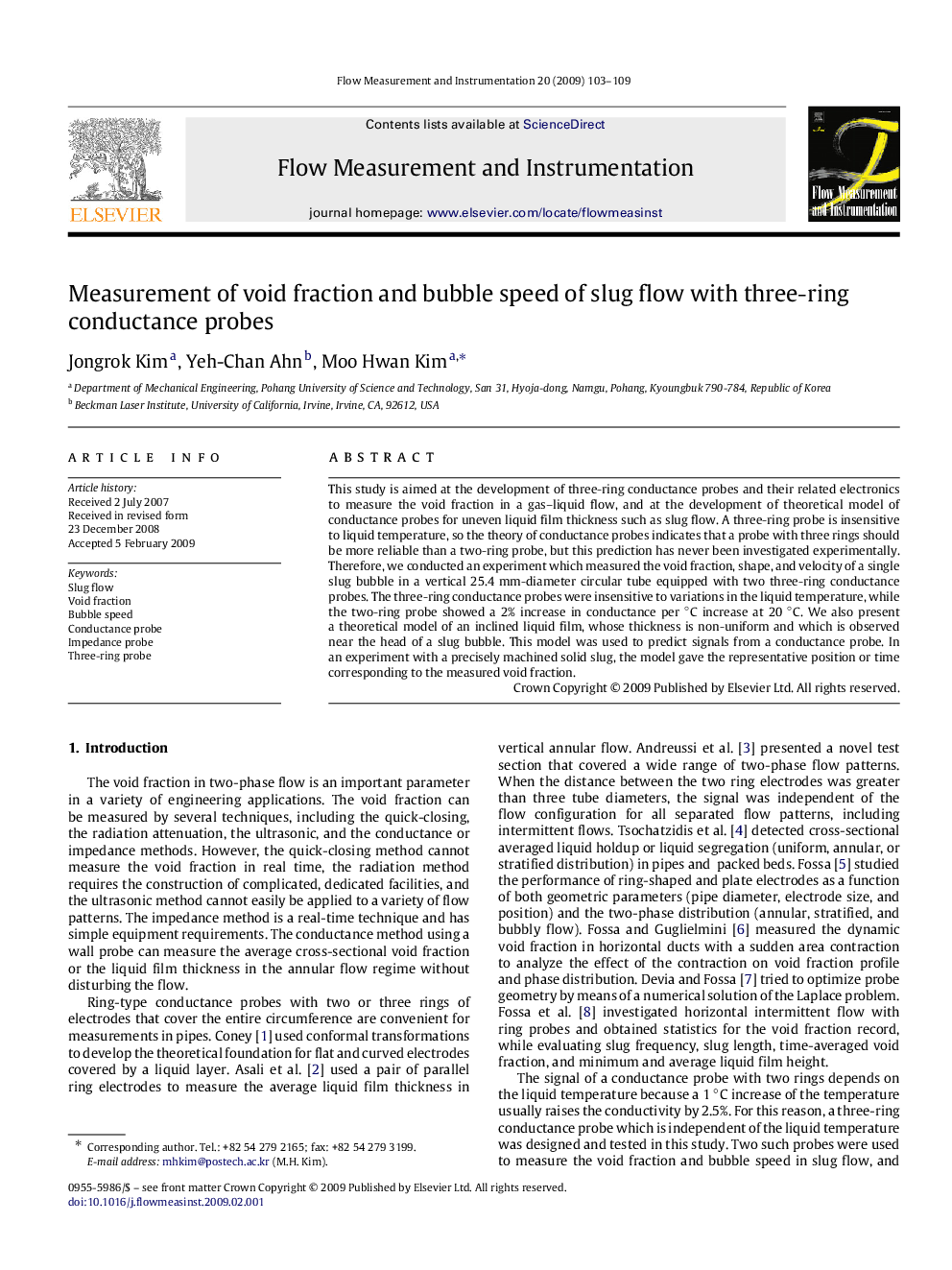| کد مقاله | کد نشریه | سال انتشار | مقاله انگلیسی | نسخه تمام متن |
|---|---|---|---|---|
| 708624 | 892020 | 2009 | 7 صفحه PDF | دانلود رایگان |

This study is aimed at the development of three-ring conductance probes and their related electronics to measure the void fraction in a gas–liquid flow, and at the development of theoretical model of conductance probes for uneven liquid film thickness such as slug flow. A three-ring probe is insensitive to liquid temperature, so the theory of conductance probes indicates that a probe with three rings should be more reliable than a two-ring probe, but this prediction has never been investigated experimentally. Therefore, we conducted an experiment which measured the void fraction, shape, and velocity of a single slug bubble in a vertical 25.4 mm-diameter circular tube equipped with two three-ring conductance probes. The three-ring conductance probes were insensitive to variations in the liquid temperature, while the two-ring probe showed a 2% increase in conductance per ∘C increase at 20 ∘C. We also present a theoretical model of an inclined liquid film, whose thickness is non-uniform and which is observed near the head of a slug bubble. This model was used to predict signals from a conductance probe. In an experiment with a precisely machined solid slug, the model gave the representative position or time corresponding to the measured void fraction.
Journal: Flow Measurement and Instrumentation - Volume 20, Issue 3, June 2009, Pages 103–109